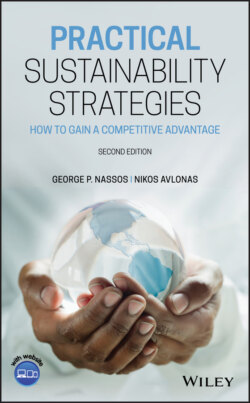Читать книгу Practical Sustainability Strategies - George P. Nassos - Страница 39
System Condition 2—Substances Produced by Society Must Not Systematically Increase in the Ecosphere
ОглавлениеThis means that substances must not be produced at a faster rate than the rate at which they can be broken down and integrated back into nature or redeposited into the earth's crust. If this condition is not met, the concentration of substances in the ecosphere will continue to increase and eventually reach undesirable limits beyond which it will be difficult reverse. In most cases, this upper limit is not known.
It is critical that we eliminate our contribution to the progressive buildup of chemicals and compounds produced by society such as dioxins, polychlorinated biphenyls (PCBs), and dichlorodiphenyltrichloroethane (DDT). In addition to these very toxic chemicals, there are many other substances produced by society that are accumulating in nature and are detrimental to the environment.
A very interesting example of the violation of System Condition 2 is that of ozone. The chemical name for ozone is tri-oxygen as it consists of three oxygen atoms as opposed to two atoms for the oxygen molecule. Electromagnetic radiation or the sparking from high voltage applications will cause the oxygen molecule in the air to disassociate into two oxygen atoms, and then each atom will combine with another oxygen molecule to form ozone. Devices that require high voltages and as a result produce ozone are arc welders, ionic air purifiers, laser printers, and photocopiers. Ozone is also created by precursors such as nitrogen oxides, carbon monoxide, and various volatile organic compounds (VOCs).
Ozone in the lower atmosphere is a pollutant and may cause respiratory problems. In the upper atmosphere, however, ozone is beneficial as it prevents potentially damaging electromagnetic radiation from reaching the earth's surface. Other man-made substances like chlorinated fluorocarbons (CFCs) break up in the atmosphere and the free chlorine or fluorine atoms become catalysts to break up the ozone molecule. This has caused the formation of an “ozone hole” in the atmosphere that allows electromagnetic radiation to reach the earth. So this is an example of the formation and destruction of ozone being the result of violating System Condition 2.
As a result of the damage created by the CFCs, the Montreal Protocol of 1987 called for the reduction and the eventual ban of CFCs chemicals for use as refrigerants and other applications. The major chemical companies then started producing hydrogenated chlorinated fluorocarbons (HCFCs), which are considerably less destructive to the ozone layer [5]. Electrolux, the refrigerator and appliance company, decided not to replace their CFC chemicals with a less toxic HCFC because this still went against System Condition 2. Instead, they opted to research for a totally biologically harmless substitute.
